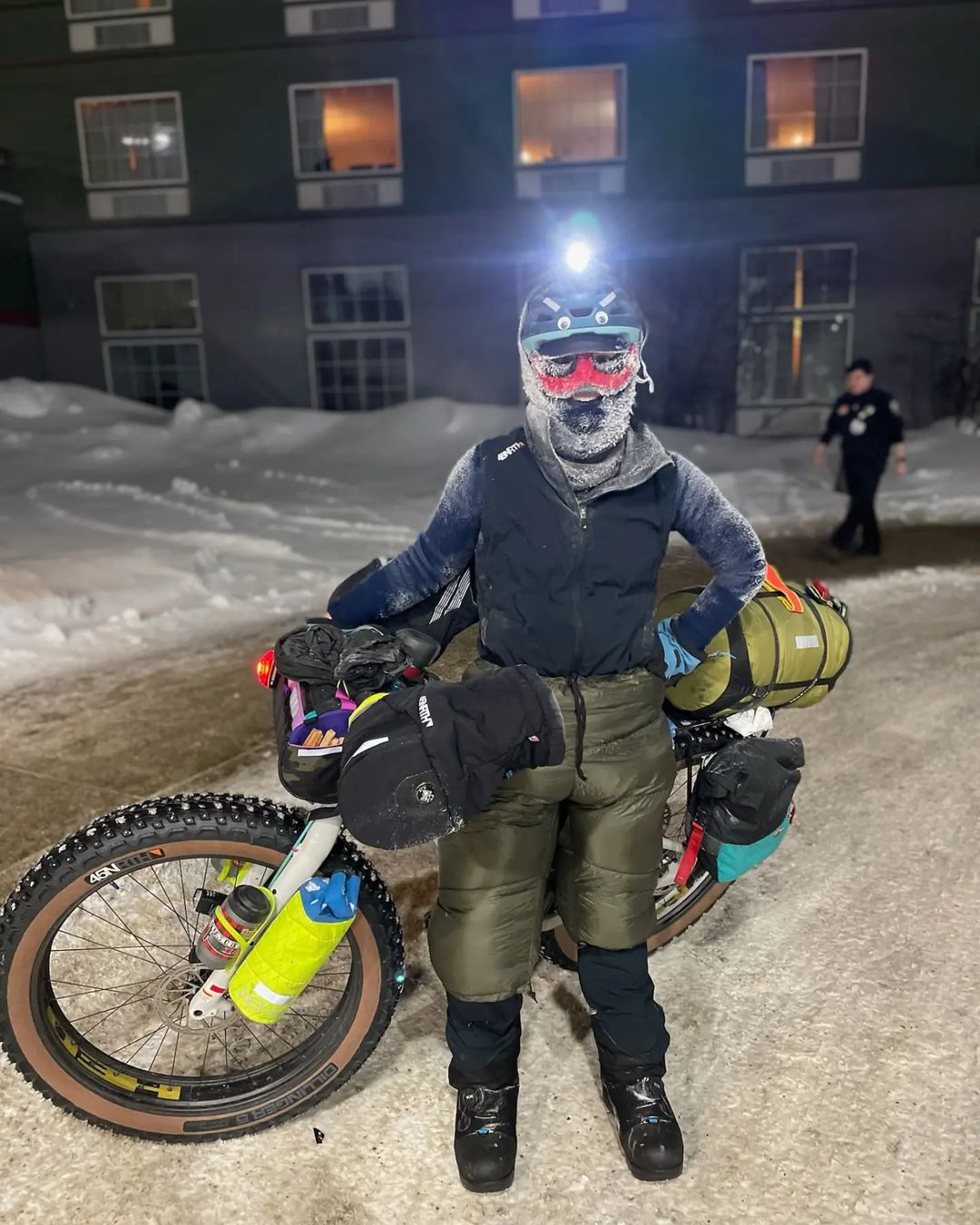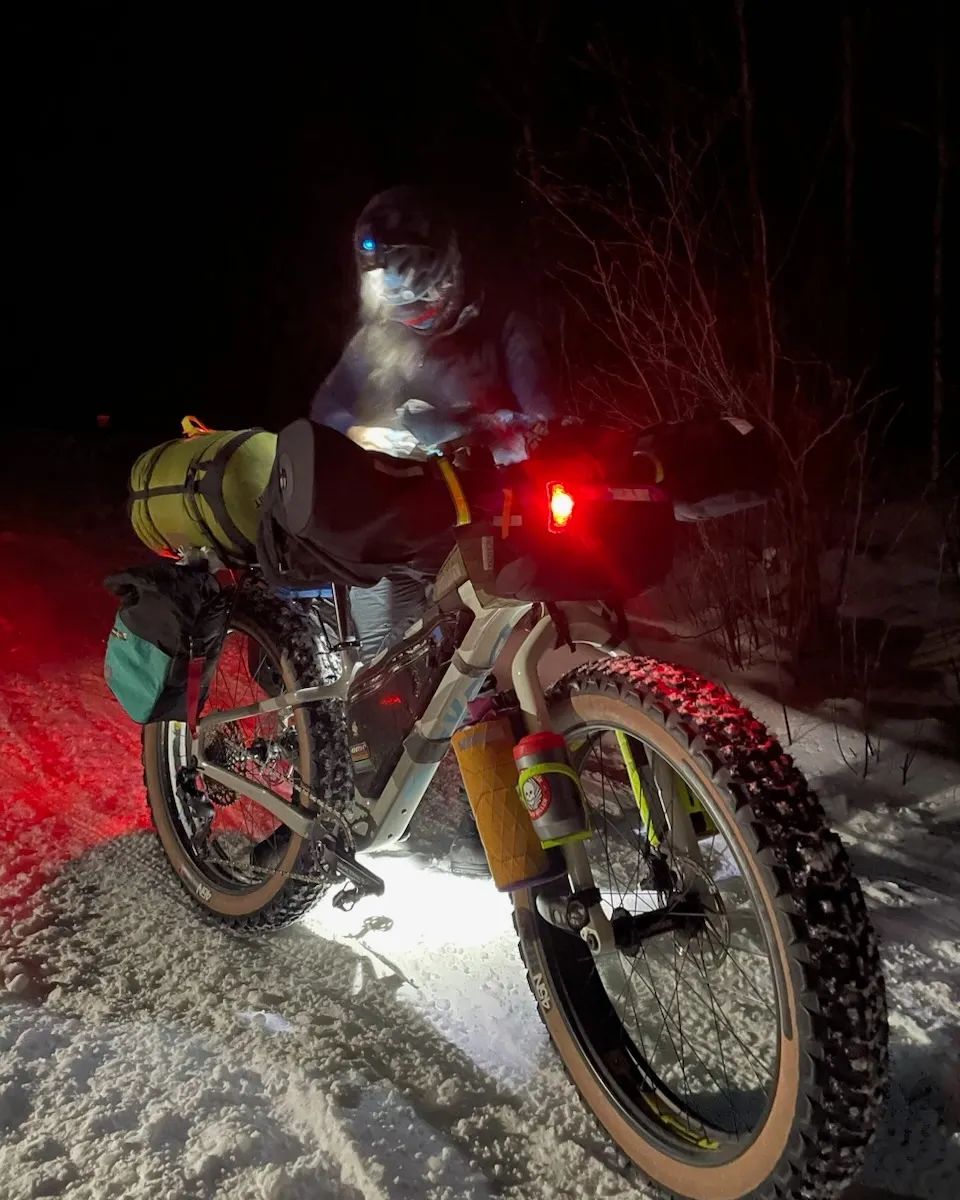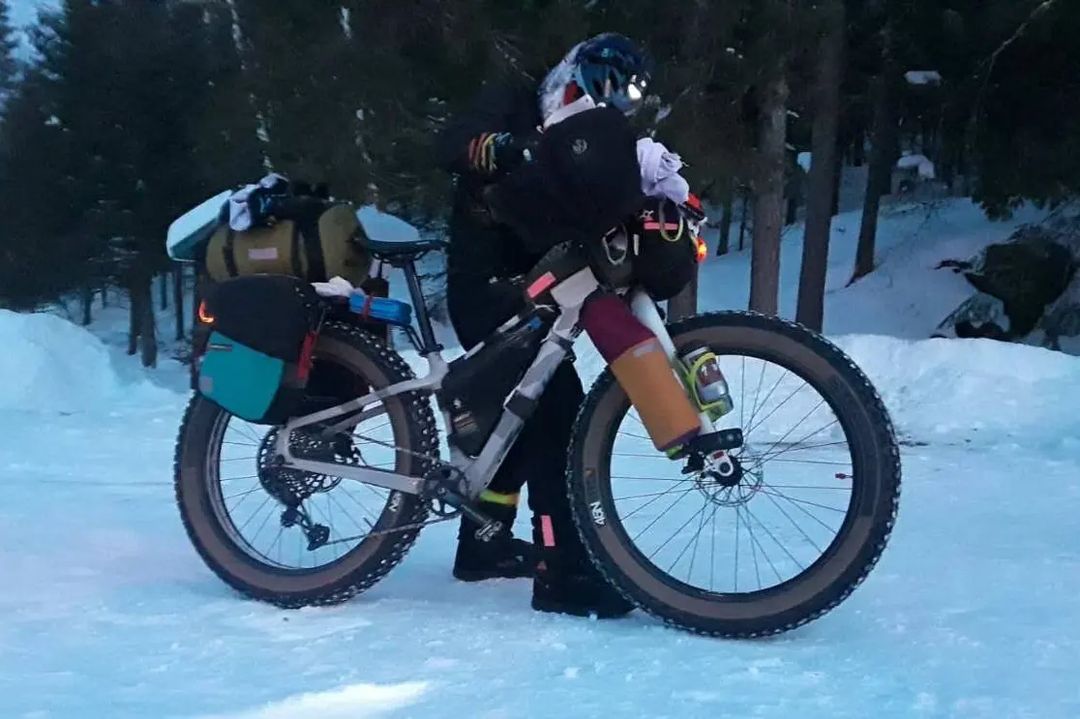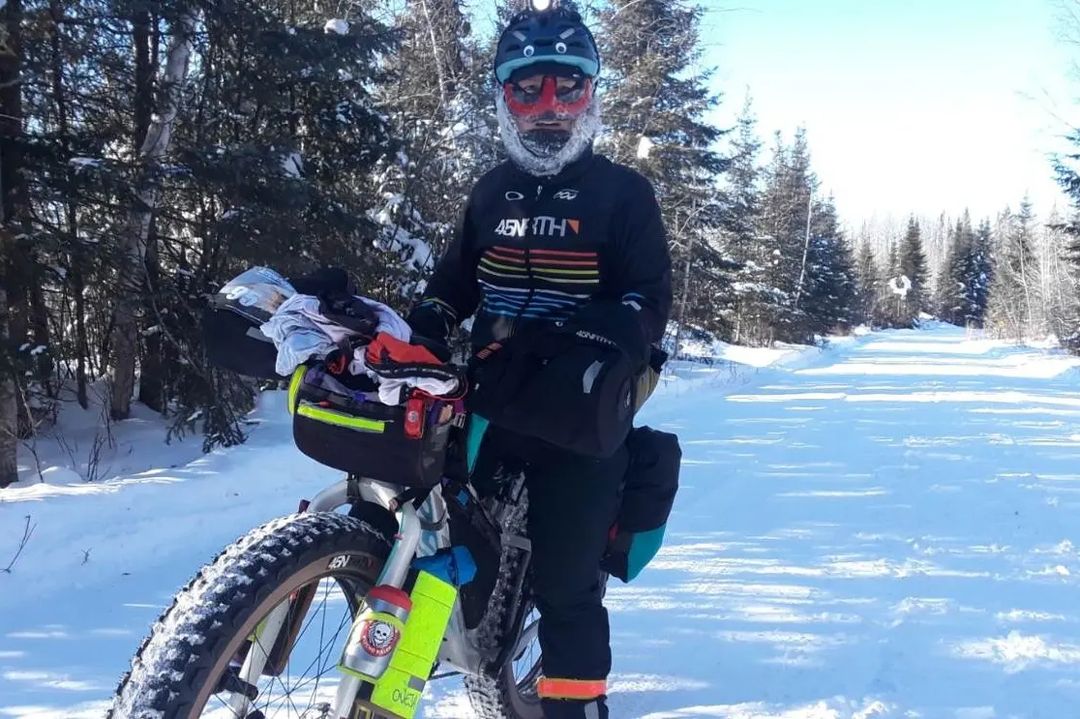What Does it Take to Finish Arrowhead 135? Jill, Kate, Leah, & Ken Share How They Do It.
- Josh Rizzo
- Feb 16, 2023
- 9 min read

The Arrowhead 135 is known as one of the 50 hardest races on earth. The physical and mental strength needed to ride one of the coldest trails during the coldest time of year is massive. Today we talk with Jill Martindale, Leah Gruhn, Kate Coward, and Race Director Ken Krueger about what it takes to finish the Arrowhead 135. Combined, they have completed the event 30 times...
Jump to section
About the Arrowhead 135
The Arrowhead 135 is an ultra-endurance race that takes place in International Falls, Minnesota. It's a non-stop, self-supported race, where participants have to carry all their equipment and supplies for the duration of the race, including food, water, and shelter. The race follows the Arrowhead State Trail from International Falls, Minnesota to Tower, Minnesota, a distance of approximately 135 miles.

It takes place in the dead of winter when temperatures can drop to well below zero degrees and blizzard conditions are not uncommon.
Participants can choose to compete on foot, on a bike, or on skis, and they have up to 60 hours to complete the race. The race is known for being one of the toughest winter ultras in the world
From the Experts: What does it take to finish the Arrowhead 135 on bike?
Racing through the night in the dead of winter with a slow heavy bike for 135 in the snow is incredibly challenging. If you've ever considered trying this event, you'll have a lot of obstacles to figure out before and during the race.
Not only do you have to have a qualifying race to enter (for bikers, they require at least a 200 mile road bike race or 100 mile off road race, preferably in winter) but you have need to figure out how to stay warm, carry your gear, fix your bike in below zero temperatures, maintain nourishment, and stay mentally strong despite being pushed the limits of human endurance.
We reached out to several seasoned winter fat bike ultra endurance athletes to learn what it takes to finish such a long and challenging event. Here are their stories.
Kate Coward
→Completed 8 of 8 Attempts
→Completed All 3 Disciplines of Bike, Foot, & Ski
→2021-2023: First Female ('21 was unofficial COVID year)
By Kate Coward @kate_coward_athlete
As winter approaches every year, our winter ultra stoke lights up social media. Questions and advice cover a range of topics from sweat management, sled choice, gear requirements, footwear, logistics, fear and more. There is so much to think about. So many variables. Arrowhead 135 is HARD!

Layers, nutrition strategy, sleep plan are all important for this race held the coldest week of the year in one of the coldest places. But, when I think about what I consider the super power to finish the race, it’s having a strong mind. If you want to finish, you have to show up surrendering to the experience ahead of you, which means being ready to expect and accept some hardships. It could be extremely cold. You might feel lonely or even fearful in those remote stretches after Melgeorges. What are you going to tell yourself when you need a boost? How will you steer yourself away from your own destructive thoughts? Can you tell when you are making up excuses? Have you practiced being your own cheerleader?
It takes a lot of physical and mental strength to finish this event. You should expect the low moments. You should expect it will not be easy. Things happen that can be impossible to overcome: your hub or derailleur breaks, you develop plantar fasciitis, you have an old injury that flares up, or you get sick vomiting. But, there are things we perceive as race-enders, with clear paths to finish. Sometimes, we just need to drag our own heads through those tough moments.
Our bodies are truly amazing. We can do hard things —yes, we really can! We can physically do more than we can consciously comprehend. But our mind unlocks that full potential. We all show up with some level of fitness, preparation, knowledge of our gear, and challenges we are about to face. When truly faced with boredom, fatigue, cold, pain … how do we handle it? Do we look for excuses or do we take those moments on as challenges to overcome? Are you spiraling into your negative thoughts? Or, are you fighting to lift yourself back up?
Since my first Arrowhead I have experimented with various techniques to master my mind using the power of positivity, mantras, or trickery to manage hardship. And you can, too! I have various strategies including smiling, reciting positive affirmations, dividing the course into tiny chunks for tiny wins. My friend Nick Quinn taught me the phrase “you live here now” in reference to his bike seat being his couch, so settle in.
Once you figure out what works for you, COMMIT to deploying all your strategies. You don’t have to believe what you are saying, but just the practice will change your emotions. It will change your state of mind. I promise. Try it. Your mental game can become your superpower.
Leah Gruhn
→Finished 10 of 12 Attempts
→2019 - First Female
→2022 - First Unsupported Female
By Leah Gruhn @leahgruhn
Desire – Many people think that completing the Arrowhead 135 as a great accomplishment. Paradoxically, in order to compete, the desire to finish must be greater than the effort and sacrifice required. Are you willing to spend the time, money, and effort?

Head Space – Prioritizing the Arrowhead 135 requires a unique discipline and focus. The head space I dedicate to training and preparation stems from streamlining my otherwise day-to-day concerns. Home, career, family life, relationships, care for my parents – all life needs to be simplified and streamlined to prioritize adventures at this scale. It may still be possible to train with any one of those challenges, but that would come down to an individual’s time management, ability to manage priorities, and support from family/friends.
Planning – Do your research and get all the information that you can: talk to race veterans, read race reports, research equipment reviews, and pour through online forums. Start small and manageable by focusing on races like the St. Croix 40, Tuscobia 80, or longer winter bike-camping trips. For every critical system on your bike, think through different worst-case scenarios and practice using your gear!
Commitment / Priorities – Heading into the race, define your priorities. Primarily, I avoid permanent damage. Frostbite is both a winter-bike-racing career-ender, and immensely painful. Secondarily, I do this for fun. Thirdly, I want to finish. In the middle of the night in the coldest temperatures, I sometimes consider dropping. Then I remember that the most interesting stories focus on overcoming obstacles and not just dropping when the first big thing goes wrong. If you must drop, it’s fine. Don’t beat yourself up about it but you absolutely must to learn as much from it as you can. If everything else is going well, I want to go as fast as possible. Note that I prioritize safety and then finishing over placing high in the field. I take my time and carry equipment that I can use to get myself out of a variety of situations, rather than being a weight weenie and taking an all-or-nothing approach.
Luck – Even if you do everything right, if you do enough of these events, something happens. Maybe it’s the foot plus of fresh snow, and you decide that you don’t want to push a bike in that much snow for 65 miles. … or maybe your best friend’s pet iguana passes away the day before you need to start the race and just don’t have the heart to leave your friend. Stuff happens and sometimes you need to give yourself some grace.
Jill Martindale
→Completed 3 of 5 Attempts
→2017 - Course Record
→2023 - First Unsupported Female
By Jill Marindale @billfartindale
I tackle winter ultras with a healthy combination of preparedness, optimism, and opportunism.
I practice with gear so I’m comfortable in different scenarios. I practice fixing flats, repairing a chain, or turning my bike into a single-speed. One thing we do differently for the cold-weather is that we strip the factory grease from my hubs and bottom bracket and replace it with a mixture that works better in sub-zero temperatures. We swap the hydraulic brakes for cable brakes and I love the Paul Love Levers, which fit snugly with my warm 45NRTH gloves inside of my pogies. We wrap the metal lever in silicone so the cold metal isn’t cold on my gloved hand. Carbon bars won’t conduct the cold like aluminum handlebars will. If you’re rolling tubeless, make sure it’s set up well before Arrowhead weekend. Going into the event with confidence that my bike is going to roll smoothly keeps me level-headed in the deep cold that we experience out on the Arrowhead trail.
Photos: Evan Simula (and rumor has it, the fashion police have been called and are on their way)
I head into the event without expectations, because there can be so many variables out there. You’re spending hours riding - so much can happen! Staying out of a negative headspace because things aren’t going to plan is important. Take the trail one mile at a time. Stay calm and be patient, because when you start to rush you can make mistakes. Carry dry layers, go as fast as you can while still keeping yourself in check, and be okay with going slower if conditions require it. Pump yourself up by talking yourself through scenarios, envisioning getting to the end, and cheering yourself on. I like to remind myself that Ken Krueger made it to the finish on his 26” Trek well before all of this fancy winter fat biking gear existed, and that if he can finish Arrowhead by pushing a regular bike through the snow like that, then it’s possible for me to finish on my fat bike, too.
Photos: Dan Martinek
As for being opportunistic? If there’s a paceline at the start, which is relatively flat until the first checkpoint, grab on to someone’s wheel and hang on! Save your energy for hills surrounding Melgeorge’s by working with others. When you get to a checkpoint, if someone is offering food, eat it. Use the bathroom. Fill up your water, because there’s no guarantee how quickly you’ll get to the next spot. Take the opportunity to put on dry layers, swap out socks, and to take care of yourself. If you’re racing unsupported and you’re allowed to warm up next to a fire, do it. Cruise downhill without grabbing your brakes to use your momentum to get you further up the next hill. If the trail is riding really firm, put air in your tires for less rolling resistance. (Or let air out if you need more traction to go uphill.) Do everything you can to save your energy to get to the finish – you’ll need it on the final miles after Wakemup Hill!

Ken Krueger | Race Director
→Completed 9 of 9 Attempts
→Completed All 3 disciplines of Bike, Foot, & Ski
By Ken Krueger
Over 1000 racers have finished Arrowhead (~70%) in the history of the race. The finish rate largely depends on weather and trail conditions. Very cold weather gives a fast trail but increases mechanical issues (mostly hubs and flat tires) and many racers struggle to deal with extreme cold. Sweating, frozen water bladders, frostbite, cold, and fatigue are some of the main issues in cold years. Warm weather softens the trail and makes biking much more difficult even with low tire pressures. -10 to 15 Deg F seems to be the sweet spot for bikers.
There are many factors a racer can control that will help get them to the finish line. In my opinion, mindset is the most critical. There are most likely going to be issues during your race, how you deal with them is key to making it to Fortune Bay. The checkpoints are warm and cozy, it is a mind game to leave the comfort of a checkpoint and head out into a long, cold night.
Racing to me is largely executing your training, I am fortunate to live in International Falls and can train in varied conditions. I've gotten up at 2 am before work to train in -40 deg F just to check out gear and my bike, I also used to keep notes on what works and what did not work.
Biking also requires clothing, nutrition, and gear. I struggle with cold feet and wear -100 deg F boots and toe warmers if needed. I still have to push my bike to keep my feet warm. I use KT tape or Dermatone to protect the little bit of skin I have exposed. In very cold weather, I have to wear contacts because I have yet to find a way to prevent my glasses or goggles from fogging. It is critical to find clothes that breath. If you are soaking wet, it can be very dangerous if you have to stop.

All racers must have a qualifying race to get accepted into Arrowhead, and all racers are capable of finishing. Arrowhead can be finished by most people if they train hard, have the right gear, and the right mindset.
To learn more about the Arrowhead 135, visit their website.























